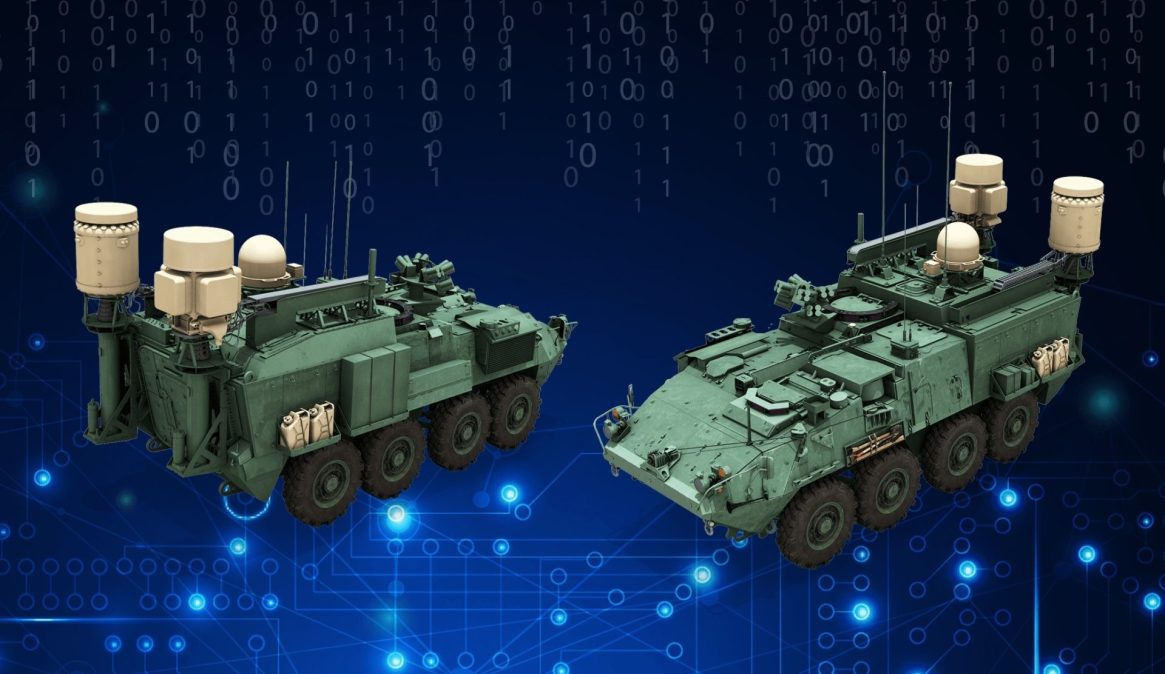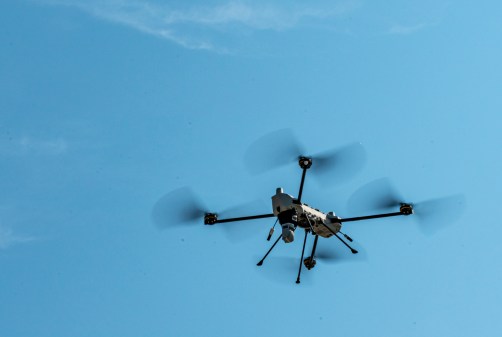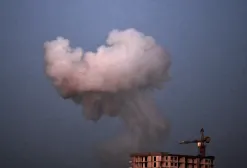Army to provide ‘transforming-in-contact’ units electronic warfare prototypes for divisions

The Army is planning to test initial prototype capabilities of a key electronic warfare system as part of the next transforming-in-contact initiative.
Transforming-in-contact, a top priority of the Army spearheaded by Chief of Staff Gen. Randy George, aims to speed up how the service buys technologies and designs its forces by injecting emerging capabilities into units and letting them experiment with them during exercises and deployments. The first iteration, TiC 1.0, featured three light brigades. TiC 2.0 is focused on armored formations and divisions as a whole — to include enabling units such as artillery and air cavalry brigades as well as Multi-Domain Task Forces, some Army Special Operations units and National Guard units.
The prototypes that will be tested are part of the Terrestrial Layer System-Echelons Above Brigade (TLS-EAB) program. That capability was initially designed as an integrated EW and signals intelligence system primarily for divisions, corps and Multi-Domain Task Forces to sense across greater ranges. It was originally slated for the Family of Medium Tactical Vehicles, but that plan has been altered. Following experimentation and lessons learned from Europe, the Army has decided to split up the SIGINT and electronic warfare functions, like it has for its smaller, brigade counterpart known as TLS-Brigade Combat Team.
The EAB technology, which is being built by Lockheed Martin, was less mature than the BCT variant at the time the decision to split the functions was made. Officials have said EAB will be the main component for defining and demonstrating an initial EW architecture and publishing the requests for information concerning the architecture that will eventually deliver it back to the BCT version for integration.
The Army will test two prototype configurations of the TLS-EAB in fiscal 2025 and 2026, according to a spokesperson from program executive office for intelligence, electronic warfare and sensors. They will include one made by Lockheed and a variant developed as a pre-prototype that was tested at Project Convergence in March called the Transformation-in-Contact Mobile Node-Terrestrial (TMNT) system.
TMNT was developed by the Army Combat Capabilities Development Command and Project Manager Electronic Warfare and Cyber from IEW&S, as a proof of concept based on requirements from TLS-EAB. While not a fully realized system — demonstrating signals intelligence and electronic warfare capabilities as a modular, scalable platform — it provided the Army certain insights at Project Convergence to help refine the eventual solution. The spokesperson noted that further refinement will be needed in operational packaging to accommodate various unit types to include light and heavy.
During Project Convergence, the system provided intelligence, supported commanders’ priority information requirements and integrated with other sensors while demonstrating the performance, modularity and potential to fill intelligence gaps across all echelons, according to an Army news release.
The apparent success of TMNT at Project Convergence has accelerated the fielding of TLS-EAB systems to transforming-in-contact units.
“Lockheed Martin’s TLS-EAB prototype was developed as part of a modular, fully open architecture approach, which enables form-factor flexibility across multiple platforms as well as rapid integration of third party software and hardware,” a company spokesperson said. “It was specifically developed to support long-range, cross platform collaboration to provide optimized and integrated signals intelligence (SIGINT), support to electronic warfare (EW), and cyberspace support operations at the Corps, Multi-Domain Task Forces for Joint All Domain Operational (JADO) operations.”
The Army plans to keep iterating with transforming-in-contact units. Previously, the service sent other electronic warfare gear to units such as the Terrestrial Layer System-Brigade Combat Team Manpack system — the first official program in decades for a dismounted electronic attack capability that soldiers can use to conduct jamming on-the-move as well as direction and signal finding with limited signals intelligence capabilities — and the Tactical Electronic Warfare System-Infantry (TEWS-I), a quick-reaction capability built a few years ago by General Dynamics, serving as a smaller system designed for infantry vehicles.
TMNT is a prime example of the Army using transforming-in-contact to focus on near-term solutions to threats, the IEW&S spokesperson said, enabling units to rapidly test organizational changes while integrating emerging technology.
The service will be exploring how to best tailor configurations to meet specific mission needs, they added, with further refinement throughout FY26 to identify key capabilities for different combatant commands, echelons and threats.
The Army has outlined a theater– and echelon-based approach to capabilities such as electronic warfare. Officials have said the service won’t provide every unit across its million-man force the same gear, but rather tranche capabilities. This will allow the latest and greatest to get out to units when developed, but also enable the Army to tailor to specific needs in theater.
Each region, based on its geography and how adversaries in that area employ capabilities, requires somewhat unique systems. For example, the dense foliage in the Asia-Pacific affects the way signals are propagated differently than the mountainous terrain in Europe.
The Army’s Spectrum Situational Awareness System (S2AS) — which is intended to provide sensing and visualization of what units look like in the spectrum and allow commanders to be able to sense and report in real-time their command post signatures — will also be given to units to test out as a part of transforming-in-contact in the future.






